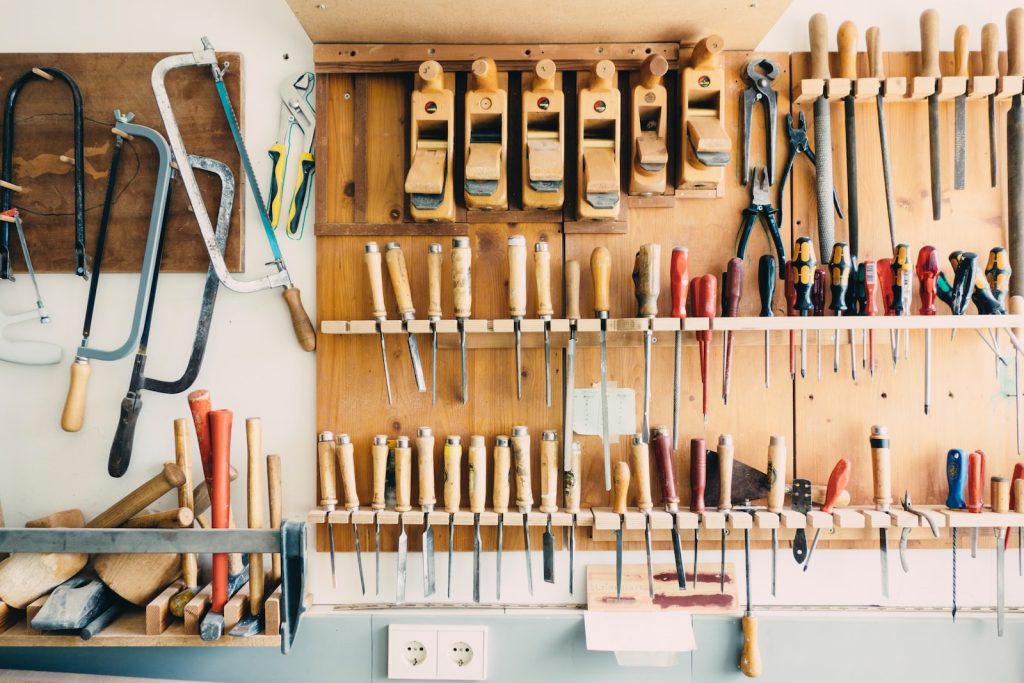Are you a novice woodworker looking to get started? Woodworking is a fantastic hobby that allows you to craft beautiful and useful items with your own two hands. Whether you’re interested in building a simple bookshelf or an intricate piece of furniture, the right tools and methods are essential for success. This article will provide an introduction to both so you can begin your journey into the wonderful world of woodworking.
Woodworking Basics
Woodworking is a craft that dates back centuries. It is an art form that requires skill, patience, and accuracy to create beautiful works of art from wood. Woodworking can be a fun and rewarding hobby for those willing to learn the basics. The first step in learning woodworking basics is understanding the different types of woods available. Each type of wood has unique characteristics that should be considered before beginning a project. Once you have chosen your wood, knowing the different tools and techniques used in working with them is essential. This includes knowing how to safely use saws, sanders, drills, and other tools designed specifically for working with wood. You should also become familiar with various types of finishes, such as staining, oiling, or varnishing, which can enhance the beauty of your creation.
Tools: Necessary Equipment

Every novice woodworker needs the right tools to get started. A few essential items are needed to begin crafting furniture and other wooden pieces in the workshop. Whether you’re just starting out or have been woodworking for a while, here is a list of necessary equipment for any woodworking project. The first tool that every woodworker should invest in is a saw. Many types of saws are available on the market, but the two most common saws used by novices are a circular saw, and a miter saw. Both these tools can help you easily cut different types of materials, such as plywood, hardwood, and softwood. Other useful tools include clamps, sanders, drills, routers, planers, and planes which will help you shape your projects quickly and accurately.
Safety: Protect Yourself
Woodworking is an enjoyable and rewarding hobby but has its dangers. Novice woodworkers need to know how to protect themselves while they hone their craft. The best way for a novice woodworker to stay safe is by taking the necessary precautions before beginning any project. Novices need to read up on woodworking safety tips, such as wearing proper protective gear like goggles and dust masks, keeping tools sharp and properly handled, maintaining a clean workspace, and following instructions closely when using unfamiliar tools or equipment. Woodworking machines can cause serious injury if not used correctly, so beginners must be aware of the potential risks associated with their use. Additionally, novices should always work with someone more experienced to guide them through any situation that may arise while working with power tools or other dangerous machinery.
Wood Selection: Quality Matters
You may face decisions related to selecting the right type of wood for your creation, but with quality in mind, the selection process should not be overwhelming. Quality matters when it comes to finding the best wood for your project needs. The types of wood available on the market are diverse and range from hardwoods (e.g., oak, cherry) to softwoods (e.g., pine). Choosing between them requires an understanding of their individual characteristics as well as which type will ultimately yield the best results for your project design and purpose. While hardwoods are known for being stronger than softwoods, they also tend to be more expensive due to their density and availability in comparison.
Assembly Techniques: Joinery & Finishing
It can be intimidating for someone just starting out, however various assembly techniques, such as joinery and finishing, can make any project much easier. Joinery involves putting two pieces of wood together in order to form a joint that will hold the parts firmly together. In contrast, finishing involves adding a final layer of protection or decoration to the completed piece. For novice woodworkers, several easy-to-use joinery techniques require minimal tools and experience. Common methods include using dowels or biscuits, while more complex options involve mortise and tenon joints or dovetails. To ensure secure connections, each joint should be properly clamped until the glue has dried fully.
Project Ideas: Get Started
Suppose you are looking for an exciting new hobby that will challenge and reward your creativity, consider woodworking. Woodworking is a great way to build useful items using your own two hands. Woodworking offers novice hobbyists the opportunity to learn how to use tools, practice their problem-solving skills, and create something tangible in the end. For those who are just starting out with woodworking, there are plenty of project ideas that can get you started on this stimulating journey. Beginners should start off with some simple projects, such as a wooden jewelry box or spice rack, before moving on to bigger ones, like a garden bench or birdhouse. If you’re stuck for ideas, many online tutorials provide detailed instructions and tips on how to craft these projects from scratch.
Conclusion: Enjoy the Craft
The conclusion of any woodworking project is a sense of accomplishment and satisfaction. With that comes the joy of enjoying one’s craft. It can be as simple as admiring your work from a distance or sitting in a chair you built for yourself. One way to appreciate your hard work is to create something unique, such as assembling an heirloom piece for future generations. Another way to enjoy the craft is by taking pride in the details and small victories along the way, perhaps hitting an exact measurement or seeing how precise angles come together in perfect harmony. Lastly, don’t forget to reward yourself with some extra ice cream after completing each project! Woodworking can be difficult but it also offers much reward when it comes time to show off and take pleasure in the end result.






























